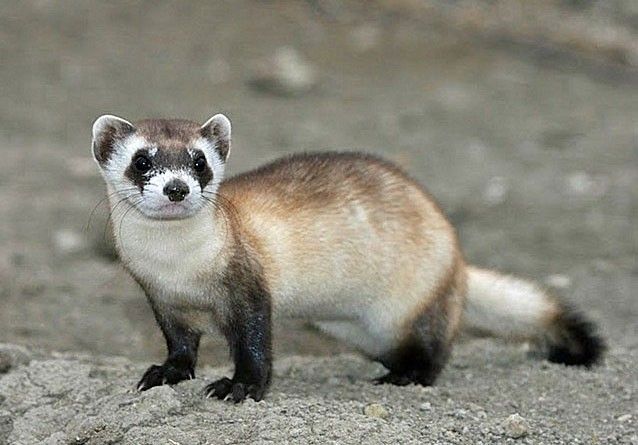Where to See 5Impossibly Elusive Mammals
-

- by Admin
- Sep 25, 2024

Aardvark
On my first African safari in 1994, I tripped over a large hole and my guide remarked, “Aardvark.” He must have seen the excited look in my eyes, as he followed with, “We won’t see one. No one ever sees one.”
And this has long been safari lore: go to the great national parks and you will have elephants and lions and cheetahs galore, but spotting an aardvark is like hitting the lottery.
Exactly twenty years after stumbling across that burrow, I found myself looking at an actual aardvark. By design.
Where to See: The Kimberley area of South Africa has a large population of aardvarks and guides and biologists who know how to find them. Marrick Safari Camp and Benfontein Reserve, two private nature preserves, have excellent track records in finding aardvarks (I saw two during four days at Marrick). Night safaris are the name of the game.
While You Wait: These reserves offer some of the most exciting night safaris in the world, with other elusive mammals regularly sighted, including black-footed cat, aardwolf and hedgehog. During the day, visit Mokala National Park with white and black rhinos and a bevvy of interesting ungulates.
Snow Leopard
Author Peter Matthiessen spent an extended trip in the Himalayas with biologist George Schaller seeking snow leopards, as detailed in his award-winning and appropriately named book The Snow Leopard. He failed. This book has led countless naturalists to believe they won’t either.
For many, the snow leopard remains the very symbol of a “grail” animal – inaccessible, impossible, the ultimate lucky sighting. It’s no accident that (spoiler alert) seeing one is the high point in Walter Mitty’s newly adventurous life in the Ben Stiller film.
Here’s the thing: You actually have a reasonable chance of seeing a snow leopard, if you go to the right place.
Where to See: Hemis National Park in Northern India has emerged as the place to see snow leopards. While by no means guaranteed, it appears that most mammal watchers who put in enough time and effort will see one. The Mammal Watching site has ample reports of successful trips. I haven’t been, but it’s high on my list.
While You Wait: If you’re going to Hemis National Park, put all your effort into snow leopards. Sure, there are other interesting Himalayan critters about and the scenery is out of this world. But you’re there for a mystical, elusive cat. Focus.
Jaguar
Just about every eco-tourist heading anywhere from Costa Rica to Peru wants to see a jaguar. And every good nature guide in those areas will inform them that to see this spotted cat would require extraordinary luck.
Except in one area. I arrived there with the goal of seeing capybaras, the world’s largest rodent. It took about five minutes to see them. And then came a much more unexpected prize: five jaguars.
Where to Go: The Northern Pantanal, at the end of the Transpanteneira Highway. You have to go deep up the rivers, but the jaguars are there.
While You Wait: A naturalist will never be bored in the Pantanal. Thousands of caimans, diverse mammals like giant anteaters and giant otters, and an endless array of water birds are never out of sight. The big cats are icing on the cake.
Mountain Lion
The third elusive big cat on the list is the most common, but also perhaps the most frustrating. In the Rocky Mountain West, it often seems that if you put in the time, you’ll eventually have a sighting. I have friends who have stumbled across them on short day hikes. I also have friends who have never seen one after decades of time in the wilderness.
I’ve come close, finding fresh tracks in falling snow. I want my own lion sighting to be in Idaho, on my home turf. But if you’re more flexible, head south.
Where to Go: Torres del Paine National Park is the only place I know of where you can see a mountain lion without relying on chance. Nature guides in the park often see multiple big cats.
While You Wait: Arguably the most stunning scenery and hiking in the world awaits.
Wolverine
Elusive. Wide-ranging. Prefers high mountains and heavy snowfall. Lives at low densities. The wolverine’s resume suggests this is one difficult-to-locate critter. And it is. Small numbers still roam big wildernesses, so you never know where one might turn up. There was even one documented in Michigan a few years ago, although that one was likely a zoo escapee.
Where to See: If you really must tick a wolverine off your life list, look into Finland. Yes, Finland. There, nature lodges place blinds over carcasses. This reliably draws in wolverines, so your odds are considerably higher than anywhere else.
I don’t oppose this practice, but let me suggest that seeing a wolverine over bait is somewhat less magical than seeing one in a high-mountain pass. I’ll wait for that chance, knowing it’s unlikely. It’s good to know that some critters will remain beyond our reach. And I could get lucky like my friend Jeff Barney, who saw one on a backpacking trip in Idaho’s Pioneer Mountains.
While You Wait: If you’re in a Finnish blind, there’s a good chance of brown bears and wolves. If you’re in the Rockies or “lower 48,” you’ll be doing a lot of time walking and looking, but you’ll be doing it in great country.
0 Comments:
Leave a Reply